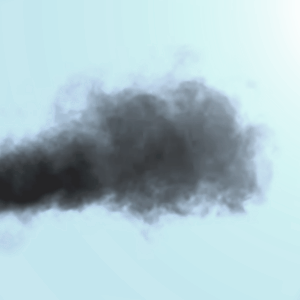The suspended particles are a complex mixture of very small particles and liquid droplets.
Natural sources:
volcanic eruptions, erosion rocks sand storms and pollen dispersal.
Anthropogenic sources:
industrial activity, population heating, thermal power stations. Road traffic contributes to particulate pollution caused by car tires to stop them both and because of incomplete combustion.
Effects on health
Particle size is directly related to the potential to cause effects. An important issue is the aerodynamic diameter of particles less than 10 micrometers that pass through the nose and throat and penetrate into the alveoli causing inflammation and intoxications.
They are particularly affected people with cardiovascular and respiratory diseases, children, the elderly and asthmatics.
Children less than 15 years inhale more air, and therefore more pollutants. They breathe faster than adults and tend to breathe more through the mouth, bypassing the filter practically natural nose. They are particularly vulnerable because their lungs are not developed and lung tissue which develops in childhood is more sensitive.
Dust pollution worsens asthma symptoms such as cough, chest pain and breathlessness.
Long-term exposure to a low concentration of powder can cause cancer and premature death.

